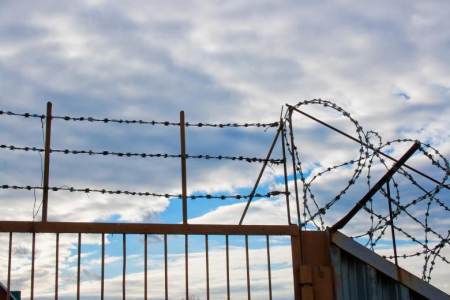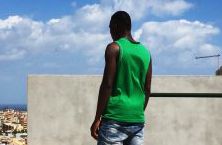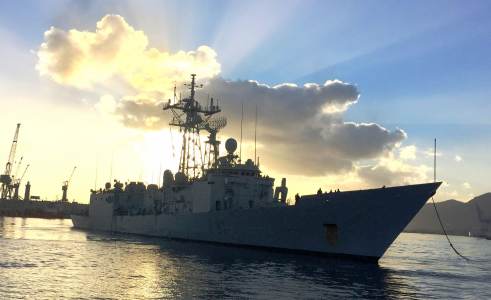The Dirty Propaganda Campaign About Libya
On 21 May 2018, a conference was held at the Ortygia Business School in Syracuse in order to “inform civil society about what is actually happening in Libya”. The panel included a moderator, Filippo Romano (Vice-Prefect of Syracuse), Roberto Perrone (Italian Ambassador to Libya), Roberto Mignone (leader of the UNHCR Mission in Libya) and Othman Belbeisi (leader of the IMO Mission in Libya).
The Vice-Prefect opened the conference explaining that the city of Syracuse is a “model” for immigration. He provided a socio-philosophical analysis of the phenomenon of migration, emphasising how arrivals have dropped by 60% since the signing of the Italy-Libya agreement in February 2017, meaning that one can now focus better on those who are here, investing in the reception system. The motivations to guarantee a good reception system, according to the Vice-Prefect, are both humanitarian as well as related to public order, given that “there is no good reception without public order.”
Having made reference to some of the issues created in Sicily by the mismanagement of the distribution of migrants at a national level, the Vice-Prefect launched into an impassioned defense of the Hotspot – from a “politically neutral” point of view – inasmuch as that, if one approaches to issue “leaving enough space to the sentimental representation of the facts” (whether from left or right), one can provide a populist judgment of a situation he defines as a “landing operation designed to provide a roof over people’s heads.”
Ambassador Perrone then spoke, emphasising how Italy is the only Southern European country on the central Mediterranean route, meaning that immigration to Italy has a very specific character, leading to the need for a similarly specific management of migrant reception.
Perrone described the central Mediterranean route as a “criminal phenomenon conducted by transnational organisations” who “commit abuses against migrants and are responsable for the unacceptable number of deaths at sea.” In the face of this phenomenon, according to the Ambassador, Italy had to make a choice: either accept the departures from Libya as a given fact, or attempt to govern the flows by opposing criminal organisatioins and iimproving the Libyans’ ability to handle them.
Italy took the second option, engaging in a “360 degree cooperation with the Libyan on the level of government – in order to oppose human trafficking one there needs to be more control over the area by Libyan maritime security agencies – and the improvement of detention centres.” This cooperation has brought “concrete results”, such as the 60% drop in arrivals as mentioned by the Vice-Prefect. The ambassador then commented on the work of the NGOs, who “arrive in position after the Libyan Coast Guard and interfere in the rescue operations, putting migrants’ lives at risk”. “If I were a migrant”, the ambassador continued, “I would also jump overboard at the sight of the NGO vessels.”
“The situation in the detention centes”, Perrone claimed, “is much better now thanks to the contribution of Italy and the NGOs. The overcrowding has been reduced and recreational activities have been organised” in order to make the management of the centres more humane. The ambassador emphasised that the system of detention for migrants brought back by the Libyan Coast Guard “isn’t perfect”, but that at least they are no longer in the hands of the traffickers. He underlined the need to share responsibility for immigration on a European level, because “immigration is a fact of life, it cannot be managed by traffickers but needs to be returned to a legal footing”.
The conference continued with an intervention from Roberto Mignone, head of the UNHCR Mission in Libya.
Mignone admitted that the NGOs – including the UNHCR – are finding many obstacles to their work in Libya: the country has not signed the Geneva Convention of 1951 and the UNHCR is not recognised in Libya, because Libya does not even recognise the concept of the refugee. The UNHCR thus operates within Libya simply as the UN and, with the Libyans’ permission, can provide assistance to people from Yemen, South Sudan, Nigeria, Somalia, Eritrea, Syria, Iraq and Ethiopians of Oromo ethnicity, as well as people from Darfur. Mignone then claimed that “Libyans too have need of humanitarian assistance from the UNHCR there are in fact half a million internally displaced persons, and for this reason the Libyans consider migrants to be a secondary problem.”
Having briefly commented on the different prospects for social “integration” faced by Arabic-speaking migrants and those from Subsaharan Africa, the head of the UNHCR mission began to describe the organisation’s work, explaining how, “not being able to be reached when in the hands of traffickers”, people are “intercepted at the point of landing, after having been rescued at sea and brought back to the Libyan coast by the Coast Guard”. There are currently six working moments in the points, and the task of collecting witness accounts begins there and continues into the detention centres. The organisation’s visits to the centres – soon to be reduced – numbered 1,080 in 2017 and 520 in 2018.
Mignone explained that migrants are identified, provided with humanitarian assistance and, if appropriate to receive a form of protection, are sent to the Libyan authorities to make a request for release; in 2017, 36,000 receive medical care and 1,428 people were released, who were then transferred to (and registered in) the UNHCR ‘community centre’ where, when possible, their families were contacted.
The mission head then recounted how Sabratha was hit by serious fighting by militia in October 2017, when “15,000 migrants, including 2,200 potential refugees, were left closed up in unofficial underground detention centres”.
“Recently the letter for the release of refugees detained in the centres has not been enough to actually obtain their release” Mignone continued. The Libyan authorities by now carry out the release only if there is a plan for evacuation to a third party country, such as Chad or Niger. Places in the transit centres are very few at the moment however, although soon an extra 40,000 are planned.
Here refugees “remain in waiting to be relocated in Europe, which unfortunately happens too slowly: since February, only 25 people have been brought to Europe out of the 1,020 people in transit. There are currently two flights planned for relocations which will be at the beginning of June and for the most part will bring vulnerable persons, such as women and children, to provide a strong signal to Europe.”
Mignone confirmed the UNHCR’s opposition to detention and that it had negotiated with the Libyan authorities to open a transit centre in Tripoli with 160 places – to be increased up to 1,000 – which will probably be ready at the beginning of July. “The centre will contain a clinic, a prayer space and a children’s area, and will help to avoid refugees passing through detention centres once they have been brought back to Libya after being rescued at sea”, he concluded.
Othman Belbesis, head of the IMO Mission in Libya, was the last to contribute to the conference, intending to provide some figures that shed light on why certain we are seeing certain situations in Libya. He explained that Libya is a country of 6 million residents. Considering that 90% of them work for the state, the private sector employs, for the most part, migrants. The Libyan economy is thus entirely dependent on the presence of migrants who, before the crisis, numbered around 1.4 million. Despite this, “regularisation is not a solution that has been considered by the Libyans, given the relatively reduced size of the local population and fear of a consequent uncontrollable wave of arrivals”.
According to data provided by the IMO, 95% of the 662,248 migrants present in Libya in 2017 live outside of the detention centres in attrocious living conditions, while the remaining 5% are enclosed in the detention centres themselves, in even worse conditions. Belbeisi emphasised how, as a matter of principle, the IMO does not particularly want to work within the detention centres; the organisation has in fact requested their closure, but at the moment does continue to work inside them. He recounted how the work of the Libyan Coast Guard has increased by 30% over the recent 4 months of 2018, and that those who have been intercepted have been brought back to the detention centres. Despite the requests made that the Libyans change their behaviour in relation to the migrants, it is difficult to see any changes. No one has any control of the area, governed as it is by specific groups within different local affiliations, who provide different living standards to migrants. Not even the Libyan Coast Guard itself is a single entity, and the choice has been made to collaborate with that pertaining to the Ministry of Defence.
Having point to the fact that the health system in Libya has collapsed and the difficulties in providing assistance to anyone in need, Belbeisi explained that the organised helps migrants who request voluntary deportation, accompanying them in their re-intergration within their communities so as to help them begin a new life. “Voluntary repatriation is not a practice promoted by the IMO, but represents a good alternative solution for those who request it” the organisation’s representative added, commenting that “in parallel with our work with migrants, we are working on a dialogue with between 17 and 18 communities on the Libyan border, whose leaders must come together to try and discuss a plan for controlling and improving conditions and infrastructure in the country. Alternative projects are even offered to those who do not want to become human traffickers but are faced with no other choice.”
With the end of the contributions from the panel, a little time remained for interventions from the public, but responses to more uncomfortable questions were left aside. It is important however to note a detail that emerged in this part of the meeting: according to the Ambassador and the Vice-Prefect, “Even if unstable, Libya is a state with a recognised Search And Rescue zone, and cannot pull back on the right to defend its borders. Furthermore: “it not being advisable to substitute the institutions of a sovereign state, it is necessary to collaborate with them in order to render Libya’s interventions meet up to the needs of the coming years.”
The information provided by the conference stands in deep contrast to the direct witness accounts of those who have passed through the Libyan inferno, as well as to the range of international reports that continue to critically report the inhumane conditions in the detention centres and a situation of political and institutional chaos that is simply aiding the overlapping of militia, human traffickers and organised crime.
In our view it is unacceptable that policies for the containment of migrant flows currently operated with the support of humanitarian agencies is based on activities that generate death and violence – considered as merely collateral effects, effects to which public opinion may be becoming numb, but which we will never stop denouncing.
Borderline Sicilia
Editorial
Project “OpenEurope” – Oxfam Italia, Diaconia Valdese, Borderline Sicilia Onlus
Translation by Richard Braude








